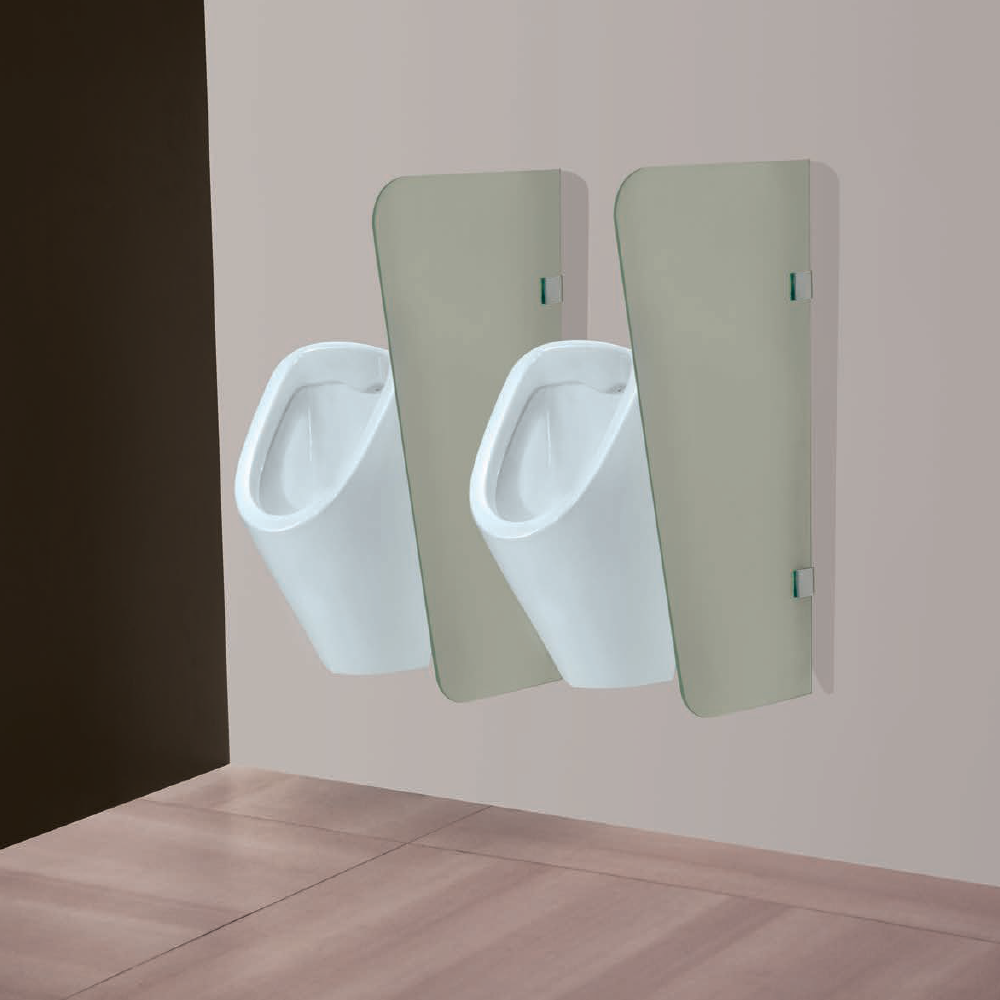Urinals are a familiar sight in public restrooms, particularly those designed for men. They are specialised plumbing fixtures designed for one purpose: urination. But there's more to this plumbing fixture than meets the eye.
More than just a porcelain counterpart to the toilet, the urinal is a marvel of design, engineered for both convenience and sanitation. This blog delves into what a urinal is, exploring their concept, functions, and even the question of whether you might need one at home.
Concept and Functions of Urinals
The core concept of a urinal is simple - it provides a sanitary and convenient way to urinate in a standing position. They are typically mounted on walls at an appropriate height for men to use comfortably (around 17-19 inches from the floor). The bowl type urinal design plays a crucial role:
- Curved Bowl: The bowl's shape helps direct urine flow towards the drain, preventing splashing and ensuring proper waste disposal.
- Splash Guards: Some types of urinals incorporate splash guards within the bowl to further minimise splashing, particularly important in high-use environments.
- Material: Porcelain is the most common material for urinals due to its durability, ease of cleaning, and resistance to stains and bacteria. Stainless steel urinals are also used, offering a sleek aesthetic and even greater durability.
Beyond the basic function, some urinals offer additional features:
- Automatic Flushing Mechanisms: Activated by sensors, these improve hygiene and water conservation by automatically flushing after use. Different sensor types exist, including those that detect infrared presence or changes in the urinal's weight.
- Waterless Urinals: Utilising a trap and a sealing liquid, these types of urinals prevent odours without using water. They are a popular eco-friendly option for water conservation in appropriate settings.
- Deodorizers: Some urinals incorporate built-in deodorizers or cartridge systems to combat potential odours.
How a Urinal Works
The working principle of a urinal is straightforward. When a user utilises the fixture, urine flows through the bowl and into the drainpipe. Flushing mechanisms vary:
- Manual flush: A handle or button is pressed to activate a flush valve, releasing water to remove waste and clean the bowl. These are often found in older restrooms and require the user to make physical contact.
- Sensor flush: Electronic sensors detect use and automatically trigger a flush. These types of urinals improve hygiene and water conservation by eliminating physical contact and ensuring a flush only occurs when necessary.
- Waterless urinals: A sealing liquid in the trap, often a combination of oil and water, prevents sewer gases and odours from escaping the drain. This liquid is lighter than urine and floats on top, creating a barrier. As urine enters the trap, it displaces some of the sealing liquid, which then flows out to a wastewater disposal system.
Types of Urinals
- Wall-mounted urinals: These are the most common type of urinal found in public restrooms. These bowl type urinals are mounted on the wall at an appropriate height for standing use and have a bowl-shaped design that leads to a drain.

- Floor-mounted urinals: Less common than wall-mounted urinals, these urinals are installed directly on the floor. They are also available in bowl shapes and are typically made of porcelain or ceramic.
- Trough urinals: These slab type urinals are long, channel-like fixtures designed for multiple users at once. These types of urinals are most common in public restrooms with high traffic, like stadiums or music venues. Slab type urinals typically have a stainless steel construction and a drain running along the centre of the trough.
- Waterless urinals: An eco-friendly option, waterless urinals use a cartridge and sealing liquid to trap and block odours instead of water flushing. These stall type urinals are becoming increasingly popular in commercial buildings as they significantly reduce water consumption.
- Sensor-activated urinals: These urinals utilise electronic sensors to detect use and automatically trigger a flush. This improves hygiene and water conservation by eliminating the need to touch a handle and ensuring a flush only occurs when necessary. Sensor-activated urinals are becoming increasingly common in modern public restrooms.
Benefits of Different Types of Urinals
- Efficiency: Their design allows for quicker use compared to toilets, which is crucial in high-traffic areas like stadiums, bars, and office buildings.
- Hygiene: Dedicated waste disposal minimises contact and promotes better sanitation compared to multi-purpose toilets. The flushing mechanism or sealing liquid helps prevent the spread of germs.
- Water Conservation: Waterless urinals and sensor-activated flushing mechanisms significantly reduce water consumption. This is an important benefit in areas facing water scarcity or for businesses committed to sustainability.
- Maintenance: Their simpler design often translates to easier cleaning and maintenance for restroom staff. The smooth porcelain or stainless steel surfaces are easier to sanitise compared to the nooks and crannies of a toilet.
Why Are Urinals Important For Public Spaces?
Let's face it, public restrooms can be battlegrounds for time, especially during peak hours. Traditional stalls often get backed up, leading to frustrating waits. This is where urinals shine. Their efficient design allows you to get in and out quickly, minimising wait times for everyone using the restroom.
- Efficiency: Urinals are designed for one specific task, allowing for a quicker in-and-out experience compared to stalls. This is crucial in high-traffic areas like concerts, sporting events, or busy office buildings, keeping lines shorter for everyone.
- Hygiene: Urinals are dedicated to waste disposal for a single purpose, minimising contact with surfaces and promoting better overall hygiene in the restroom. This is especially beneficial in high-use environments.
- Privacy: Urinals are typically located in open areas within the restroom, offering a sense of privacy while eliminating the need to enter a closed stall, which can feel more confined for some users.
- Sustainability: Many public restrooms are adopting waterless urinals or those with sensor-activated flushing mechanisms. This significantly reduces water consumption compared to traditional toilets, making urinals an eco-friendly choice.
Urinals, though seemingly simple, stand as a testament to both practicality and progress. Its design prioritises efficiency and hygiene, ensuring a smooth flow (pun intended) in high-traffic areas. While not always the most glamorous fixture, the urinal's contribution to public sanitation and water conservation efforts is undeniable.


